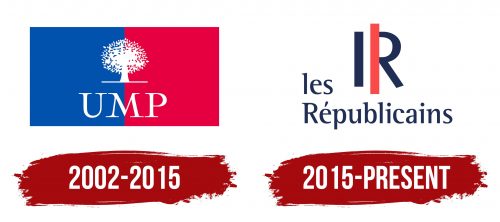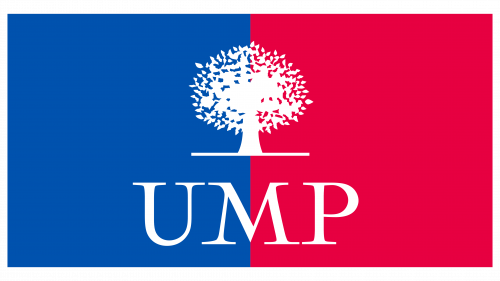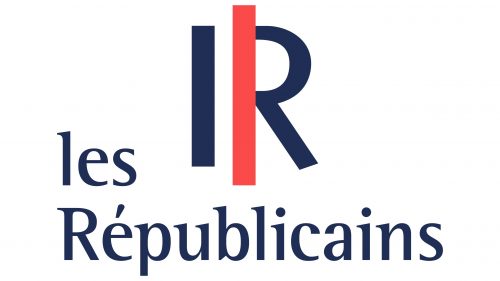The logo of LES RÉPUBLICAINS underscores the party’s direct and uncompromising stance on France’s future. The emblem represents a movement striving for victory and leadership to implement its political agenda.
Les Republicains: Brand overview
On May 30, 2015, Les Républicains officially emerged, although their origins go back to earlier right-centrist movements in France. The party evolved from the Union for a Popular Movement (UMP), formed in 2002 by merging several right-centrist groups, including the neo-Gaullist Rally for the Republic (RPR).
UMP was created to support Jacques Chirac’s presidency and to unify right-wing forces against the influence of left-wing parties. Alain Juppé was the first leader of UMP. In 2004, Nicolas Sarkozy took over leadership and used the party as a platform for his successful 2007 presidential campaign.
Under Sarkozy’s guidance, the party won the 2007 presidential and parliamentary elections. Sarkozy became the president of France, and the party secured a majority in the National Assembly. After Sarkozy’s defeat in the 2012 presidential elections, the party transitioned into opposition, sparking an internal leadership struggle between François Fillon and Jean-François Copé, significantly weakening the party.
In 2014, a scandal involving the funding of Sarkozy’s 2012 presidential campaign, known as the Bygmalion affair, damaged the party’s reputation. Despite this, Sarkozy returned to politics later that year and was re-elected as the party’s chairman. He rebranded the party to distance it from past scandals and revitalize its image.
The party was officially renamed on May 30, 2015, emphasizing a commitment to republican values and creating a fresh identity. In 2016, the party held primaries to select its candidate for the 2017 presidential elections, resulting in François Fillon, a former Prime Minister under Sarkozy, emerging victorious.
Fillon’s presidential campaign faced accusations of fictitious employment involving his wife, leading to a third-place finish in the first round of the elections. The party faced a crisis following the setbacks of the 2017 presidential and parliamentary elections. Many prominent members moved to Emmanuel Macron’s new movement.
In December 2017, Laurent Wauquiez became the new party leader. Under his guidance, the party adopted more conservative stances on social issues and immigration. However, the 2019 European elections saw the party achieve its worst result, securing only 8.48% of the vote, leading to Wauquiez’s resignation.
Christian Jacob became party chairman in October 2019, tasked with uniting the party and preparing for future elections. The party positions itself as a major right-centrist force in French politics, advocating for a free market, lower taxes, reduced government spending, and stricter security and immigration policies.
Meaning and History
What is Les Républicains?
It is a French political party that represents conservative and right-wing views. Its platform focuses on issues related to the economy, security, immigration, and national identity. The party supports market reforms, tax reductions, and strengthened law enforcement measures. It relies on traditional values and aims to preserve France’s cultural heritage.
2002 – 2015
The party’s first logo looks optimistic and shows the flourishing of the French nation as a mighty, living white tree against the background of the national flag.
The symbol repeats the emblem of The Union for a Popular Movement, from whose reorganization the party emerged. This approach shows that the new political force inherits the ideas and views of UMP related to Gaullism.
The program is based on the freedom and prosperity of the French nation, sovereignty, and unity. There is a drive to break free from restrictive alliances and neutralize neighboring states’ oppressive influence. The tree in the image is white, emphasizing lightness and freedom. The shade conveys purity, honesty, and nobility.
The dense background colors serve as an element of protection. The combination of red and blue highlights a centrist position, uniting different political views around the support for France’s prosperity.
2015 – today
In 2015, the “Les Républicains” party updated its logo to create a more refined and modern image. Significant political changes marked this period as the party sought to unite various ideological strands, such as social Gaullism and right-wing positions. The logo, with its clear lines and symbolism of the French flag, reflects these aspirations and underscores the importance of republican values for all French citizens.
The “Les Républicains” logo features a strict and modern design. At the center are the initials of the party name, rendered in straight and even lines. The main symbol, “R,” is in red, which, together with the blue “I” and white space, forms the French flag.
The red “R” symbolizes a new era and the convergence of social Gaullism and right-wing positions. The red line is deliberately extended to stand out in the logo. The blue “I” and white space create the impression of the French flag, highlighting patriotism and loyalty to France’s republican values.
The logo reflects the desire to unite all French citizens who share the values of the French Republic. It symbolizes a new beginning and emphasizes the importance of the historical context and classic ideas that form the movement’s foundation.
The serif font emphasizes the intention to stand out from opponents and adds an element of sophistication and respect for historical traditions. It hints at a rich historical past and classic ideas that have existed for decades.
Red symbolizes energy, passion, and determination. Blue is associated with stability, reliability, and conservatism. White symbolizes purity and transparency.






